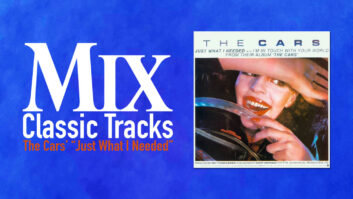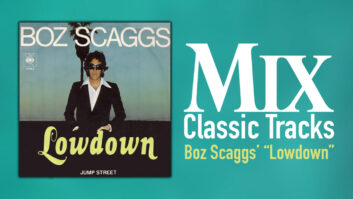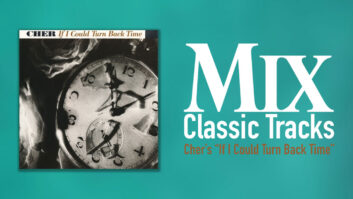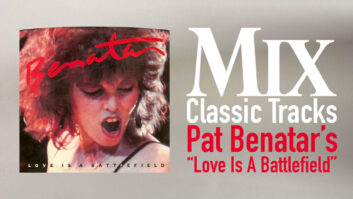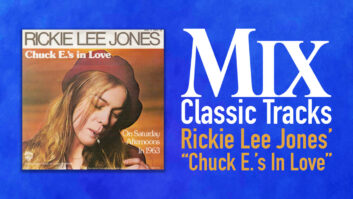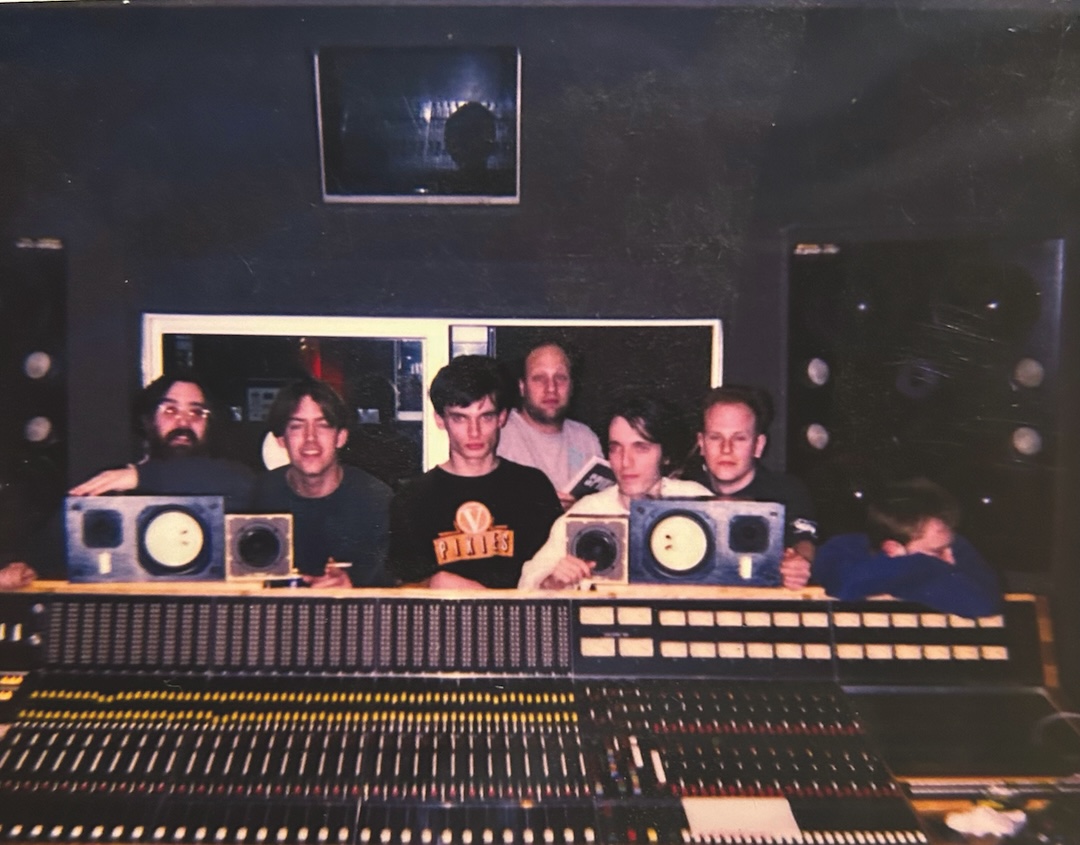
The song “Creep” may never have been recorded if Sean Slade and Paul Kolderie hadn’t overheard Radiohead messing around with it one day after they had been hired to produce and engineer two other songs for the band. While on the phone with both of them, they detailed the fortuitous evolution.
The two songs they were assigned—“Inside of My Head” and “Million Dollar Question”—were not the band’s best material, says Kolderie (“no offense to Radiohead”), though both were eventually released in Japan and later came out in the Pablo Honey box set. Thankfully, the producer/engineer duo knew how to work with the other challenge ahead: how to work with an inexperienced group of musicians.
Slade and Kolderie had met at Yale, played in bands together and opened a grungy studio in the Boston area where they produced and engineered plenty of bands that had never recorded before. They estimate having spent an accumulated 50,000 hours in their little studio as a team, defining and developing their working dynamic as having no real delineated roles. They seem to have the philosophy that two smart heads are better than one, and they are quite simply equal partners who perform all functions together.
The fact that they had previously worked on projects with American bands like the Pixies and Dinosaur Jr., who were very well received in England, fit management’s bill for Slade and Kolderie to produce this new band Radiohead, as they had hopes of bringing them to the American music marketplace. Radiohead was also keen on the producers’ resumes.
ON TO CHIPPING NORTON
Slade says they did the best they could with the original two songs, but one day before going into the studio, while still at a rehearsal space Slade describes as an old shed in an apple orchard in Oxford, the band started playing “this other song.”
“We looked at each other, and as they finished the song, Thom mumbled something about ‘That’s our Scott Walker song,’ but we thought he said, ‘That’s a Scott Walker song.’” Kolderie recalls. “You know, Scott Walker has a lot of obscure songs, so Paul turned to me when we left the rehearsal and said, ‘Too bad the best song is a cover.’”
About a week later, while they were having an off day in the studio, Kolderie thought he’d try to get them in a better mood by suggesting they “play that Scott Walker song.” They pushed Record and off they went.
“They only played it once, and that was it,” Kolderie says of the basic track, cut on Chipping Norton’s Trident TSM console. “That was the magic thing that happened. They just played it, and they were so happy to be playing something else that they wanted to play, that it just came out. That song just wanted to be born, and it just blasted itself out of the ether. That was ‘Creep,’ one take.”
“The reason we didn’t do a second take was twofold—we knew we had captured lightning in a bottle,” Slade adds. “It was a magic moment and everybody knew it—the band knew it, we knew it—but the other reason was that we were getting paid by the song. I realized instantly that if we added the third song, the A&R guy would assume that we were just doing it to make more money. Which is exactly what he thought.”
Classic Tracks: Black Sabbath’s “Paranoid”
Kolderie finishes the story, explaining that after working on the song for a short while after lunch, at the end of the day, he called Keith Wozencroft, the A&R person at the time. “I said, ‘We’re working on these songs, but we have another song that I think you should hear.’ And he was like, ‘Hmm, well, hmm, I don’t know.’ He thought that was maybe a little bit of a squeeze play we were putting on him, you know. He said, ‘I’ll drive out to Oxford from London after work.’
“So he got there around 7 and we played it for him, and then he said to play it again, and we played it again,” he continues. “It was still in a rough form. It wasn’t really finished, but you could tell what was going on. And he said, famously, ‘Well, you can finish it, but it’s not a hit; it’s not a single.’ And I said, ‘Respectfully, I think it is a single, and I think we should finish it.’ And he said, “All right, go ahead.’”
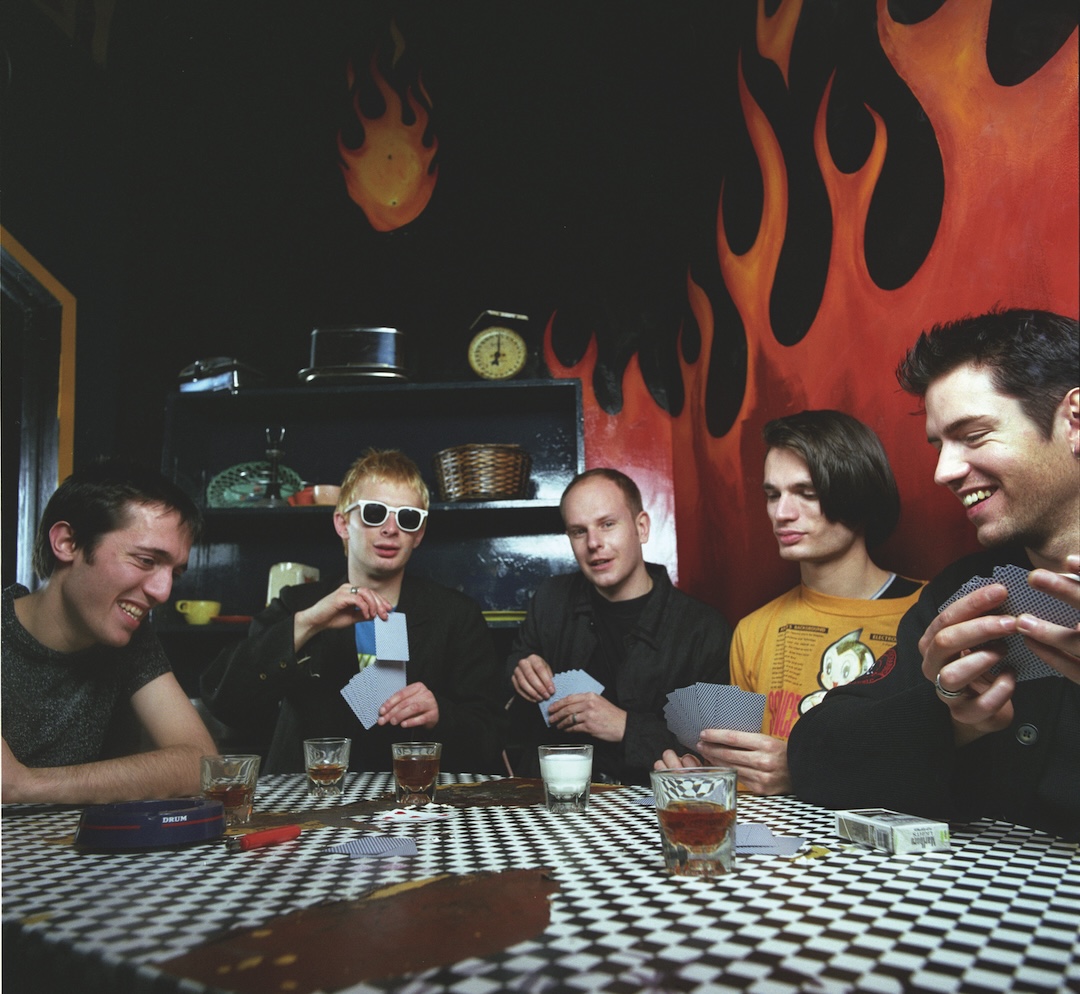
In the studio with Thom Yorke (vocals, guitar, piano, keyboards); brothers Jonny Greenwood (guitar, keyboards, other instruments) and Colin Greenwood (bass); Ed O’Brien (guitar, backing vocals); and Philip Selaway (drums, percussion), the goal was to make the band comfortable, as if they were in a rehearsal room—no click and “have them play live.” Even with three guitars, they could record live because, as Slade explains: “They had already clearly delineated what each person did.”
“A lot of bands would have the three guys playing the same thing,” Kolderie asserts. “That’s not good, but they were smart. They understood that each guy needed to have a part and that each part should work together. We didn’t have to figure that stuff out with them too much. Everybody seemed to know what his part was going to be.”
“Ed would play rhythm guitar and create more textures and parts that added to the overall arrangements.” Slade adds. “Thom would play very traditional rhythm section guitar, which was very tight with the bass and drums, and Jonny was just the wild card—the X factor who created wild bursts of sound and great solos and quirky parts on top of that.”
The producers and Radiohead spent a week at Chipping Norton, a residential rehearsal/studio facility in Chipping Norton, England, on the original two-song “audition,” and when they were officially hired for the project, they booked the studio for a month where they recorded and mixed “Creep” entirely, as well as pieces of other songs on Pablo Honey. They later decamped to Courtyard Studios for a change of pace to work on some of the other tracks.
3 OVERDUBS, THEN MIX
There were really only three overdubs on “Creep”—Yorke’s vocals with a Telefunken U47, a piano part played by Jonny Greenwood, and an additional track of the big guitar noise that prefaces the lead guitar parts going into the choruses, which Kolderie describes as an electric guitar through a pedal through an amp.
Radiohead had already worked out a version of that big sound when they had played it down originally, but Slade and Kolderie wanted it on its own track in case they needed to make it louder in the mix later on, so they re-recorded it with a Fet 47 in the drum room.
“The drum room was very live, so we put the amp in there,” Kolderie explains. “I remember thinking, ‘I’d better get the first take because it’s going to be the best one,’ and sure enough, he killed the first one, and the second one took us about 20 tries.”
Discover more great stories—get a free Mix SmartBrief subscription!
Slade points out other interesting sonic properties about the drum room: “It was made with actual rocks dug up out of the ground around Chipping Norton, so the fact that all the rocks were different acted like some weird diffusion. The room was very reflective in a unique way. One thing I had never seen before and have never seen since was there were two Sennheiser 441 mics embedded in the ceiling, which are dynamic mics—completely against the Hollywood paradigm where you have to use condenser mics to get the cymbals. I thought, ‘They must know something.’ And it sounded great; that became part of the drum sound on ‘Creep,’ too.”
Kolderie recalls a happy accident in the mix on “Creep.” “To keep the noise down, we were starting with most of the faders down and as we got about two minutes into it, I looked at my fingers and said, ‘Damn, I forgot to put the piano in,’” he says. “I didn’t stop the mix because we had finished the bridge and we were heading into the chorus at the end that is not loud, and I said, ‘Let’s put it in here,’ so right on the 1, I put the piano in just for that part, which made it kind of a coda. It was a brilliant move, but it was a mistake.”

